From 24/7 service to ‘estero-telling’: Checking up on the state of public libraries
It may be considered wrong to judge things by physical appearance, but in the case of public infrastructure, created by and maintained under the jurisdiction of the government, how much would physical appearance matter? What does, for example, a public library in a state of disrepair say about the way it is run? Or what can be said about the relevance of a library, decked with the latest technologies and collections, if it is always empty?
A law led the way for the creation of more public libraries. In June 1994, Republic Act No. 7743 was passed, an act providing for the establishment of public libraries (congressional, city, municipal and barangay-level) throughout the Philippines. The goal was to elevate the literacy and promote the moral and intellectual well-being of Filipinos. The establishment of public libraries shall be an integral part of local government units, with a regular annual library appropriation to be allocated, based on a budget estimate proposed by a head librarian.
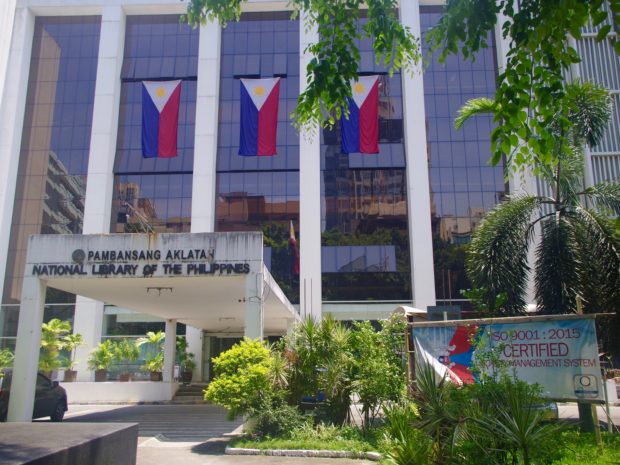
The National Library of the Philippines. Image: INQUIRER.net/Cody Cepeda
Today, the common challenges public libraries and librarians face remain the same: lack of government support and funding. This was observed by Blesila “Bless” Velasco, Librarian V and chief of the National Library of the Philippines’ Public Libraries Division, and her team, based on their experience of monitoring and inspecting public libraries throughout the country.
“Kulang ‘yung support, tsaka ‘yun nga, every election, change management,” Velasco said. “So kung ang nakaupo ngayon supportive, maaari next time hindi, kaya mahirap ‘yung sustainability.”
(There is not enough support. There is a change in management after every election. If the one seated now is supportive, it is possible that the next one may not be, that is why sustainability is hard.)
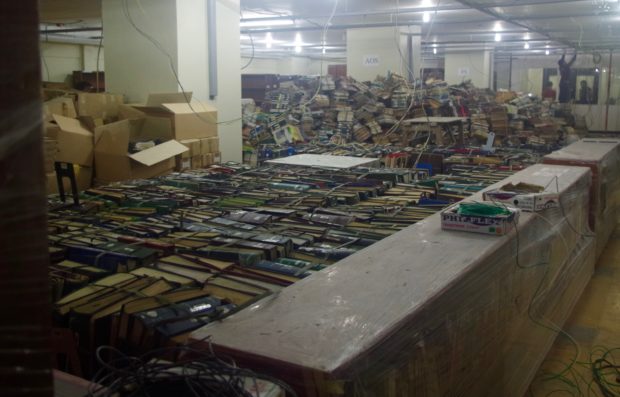
Renovation is being conducted to upgrade the National Library of the Philippines. Image: INQUIRER.net/Cody Cepeda
Michael Reyno, in-charge of the division’s monitoring and evaluation unit, recalled an experience during their library inspection in Agusan del Norte last June 2018. According to Reyno, there are three affiliated municipal libraries in the province, but only one library, Nasipit Municipal Library, is operational. The Buenavista Municipal Library has since been closed and its collections destroyed by termites, while the other, Magallanes Municipal Library, was under threat of closure.
“Totally closed na siya. ‘Yung mga collection from the National Library of the Philippines, wala na, inaanay na, tapos ‘yung dating room for library, iba na yung nag-o-office,” Reyno said of the Buenavista library. “And then yung other one, Magallanes Municipal Library, may possibility na din mag close kasi ‘yung librarian mag-re-retire na. Tinanong ko siya kung anong sabi ni mayor, wala pa daw na papalit sa kanya.”
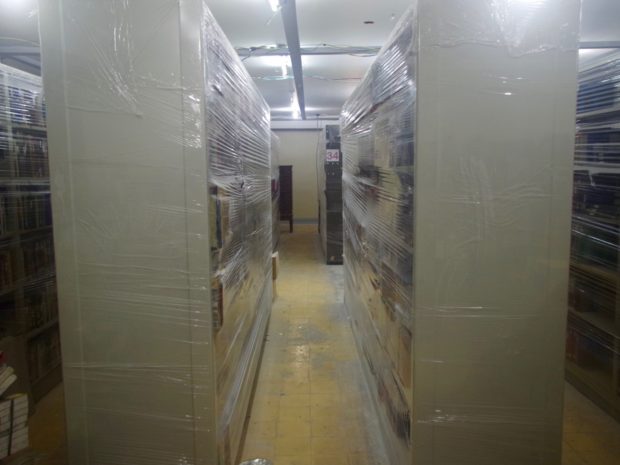
Shelves are covered in protective casings during the renovation of the National Library of the Philippines. Image: INQUIRER.net/Cody Cepeda
(Buenavista library is totally closed. The collection from the National Library of the Philippines is gone, destroyed by termites. The former room for a library is now used as a different office. The other one, Magallanes library, may possibly be closed because the librarian is nearing retirement. I asked her what the mayor said, she said there has been no one assigned to replace her.)
A 2018 study on the status of public libraries in the Philippines, conducted by the National Library, recommended that the support of local and national governments to public libraries must include a myriad of aspects, from improving infrastructure and facilities, learning resources and equipment, down to increasing human resources, especially licensed librarians.
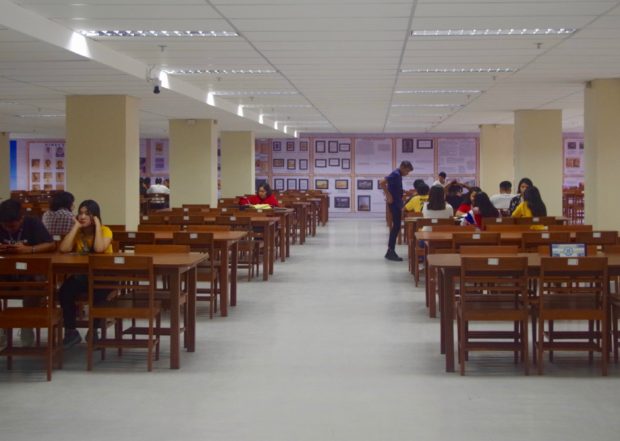
A reading room at the National Library of the Philippines. Image: INQUIRER.net/Cody Cepeda
Increase in budget and funding allocations, according to the study, must be prioritized by the local government. The National Library, in its call for strengthening and improving public libraries, noted that this is due to a rising trend among actual library clients, most of whom are students and professionals who make up the country’s human resources.
But the crux of the issue, it seems, is whether local officials care enough for books and reading to prioritize public libraries.
“Kasi ano talaga eh, ‘yung personal view ko lang ha, kung ang mayor palabasa, andun ‘yung support, pero pag hindi, nahihirapan ‘yung mga staff,” said Velasco. “Papaano kaya namin sila [i-t-train], kung walang support, anong gagawin namin?”
(It is really like this, just my personal opinion – if the mayor loves to read, the support is there, but if not, the staff encounters difficulties. How are we going to train them if there is no support? What will we do?)
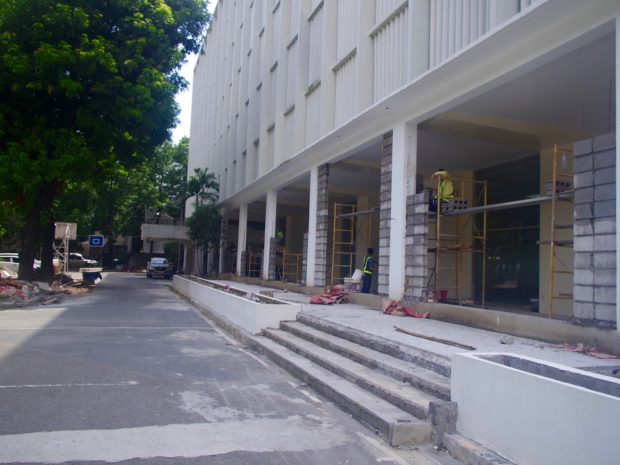
Renovations at the National Library of the Philippines. Image: INQUIRER.net/Cody Cepeda
Today, the Public Libraries Division offers different kinds of trainings to public librarians throughout the country on how to respond to these challenges and changing times. The initiative of the librarian matters in these cases, said Velasco, so they are also being taught how to reach out to different organizations for partnerships and collaborations.
“Important talaga na quality sa librarian na meron din siyang initiative, kasi kung hindi ka papansinin, nasa iyo din yan, anong gagawin mo?” she said. “So meron kaming training, essential skills for public library personnel. Hindi siya technical, more on communication, more on partnership, how to make the library a welcoming space.”
(It is important for the librarian to have initiative, because if there is none, and no one pays attention to you, that is up to you, what will you do? That is why we have training for essential skills for public library personnel. It is not technical, it is more on communication, partnerships and how to make the library a welcoming space.)
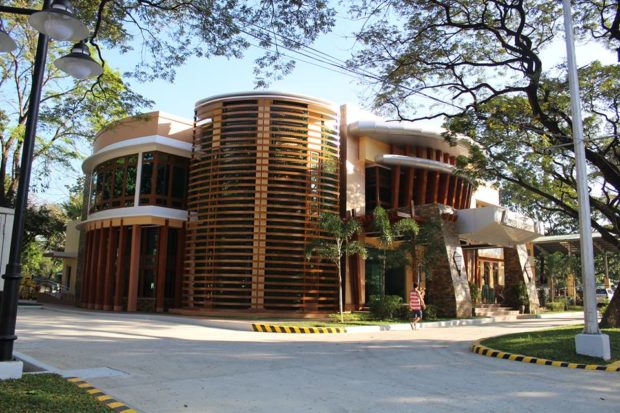
The Quezon City Public Library. Image: QCPL official Facebook page
She added it is a part of the process of evolution that librarians find strategies for difficult situations despite having limited resources.
“Laging may strategies, gagawa ka lang talaga ng kung ano ‘yung gagawin mong action plans kung walang support,” said Velasco. “Hindi rin ba dahil wala kang ginawang programs, wala kang ginawang proposals? Tuturuan din namin sila mag budget proposal sa susunod.”
(There are always strategies. The librarian will be obligated to create action plans especially if there is lack of support. Maybe you are not executing programs because you are not creating proposals. We will be teaching them to create budget proposals.)
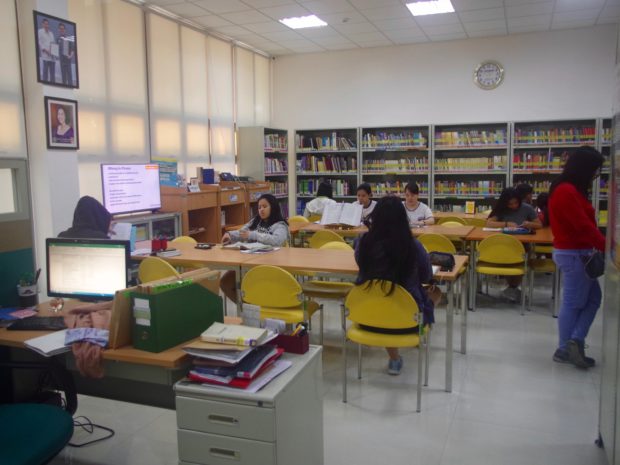
The Filipiniana section of the Quezon City Public Library. Image: INQUIRER.net/Cody Cepeda
The division also pays courtesy calls to mayors during their monitoring visits to provinces to discuss with local officials the issues some librarians are experiencing.
“Tinutulungan talaga namin kasi ‘yung mga librarian usually mahiyain ‘di ba? So kami ‘yung magdadala sa kanila kay mayor, kami mag-re-request para kay mayor, ‘Mayor bigyan mo naman sila ng TV para sa mga bata.’ Wala kaming hiya pagdating sa LGU,” Velasco said in jest.
(We really help them because librarians are usually shy, right? We bring them to the mayors, we make the requests to the mayors, for example, “Mayor, please give them a television for the children.” We are shameless when it comes to the LGUs.)
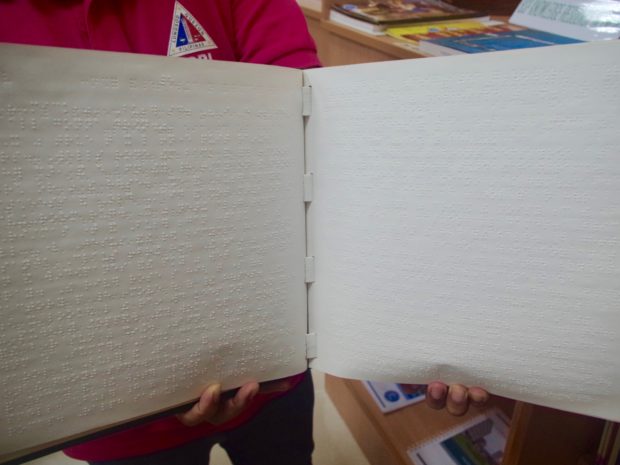
Braille books available at the Quezon City Public Library. Image: INQUIRER.net/Cody Cepeda
24/7 libraries for all?
The 2018 study of the National Library also showed that the problem most encountered by library users is accessibility. The public libraries in the country’s capital, Manila, right now fall under the example of inaccessibility, as the Manila City Library and its branch libraries are currently closed for renovation (officers declined requests to be interviewed). In general, meanwhile, public library users, most of whom are students and professionals, find it difficult to get to libraries and get there before these libraries close for the day.
But operating 24 hours, seven days a week is looking to be the trend among public libraries. Cebu City Public Library, early last March, became the first-ever library in the country to open its doors 24 hours, seven days a week. Months after their move, a report by Mindanews in November 2018 said that the new Davao City Public Library will be following suit this 2019 upon completion.
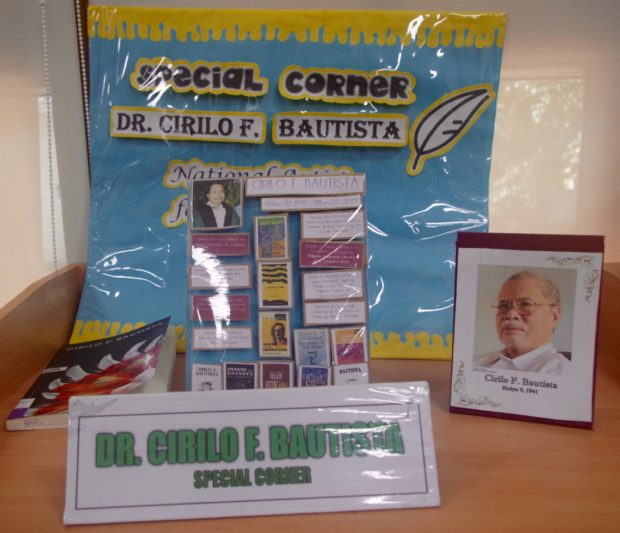
The Quezon City Public Library gives tribute to Filipino authors to help raise readers’ awareness about them, such as this special corner for National Artist for Literature Cirilo F. Bautista. Image: INQUIRER.net/Cody Cepeda
Some public libraries in Metro Manila, such as the Quezon City Public Library (QCPL) and Parañaque City Public Library (PCPL), have responded to this by extending their library hours to 7 p.m. to cater to users. But as much as some libraries want to operate 24 hours, concerns about safety and financial feasibility are first taken into account.
“We are open 8 a.m. to 7 o’clock [in the evening] to give way [to the] clamor [of the] public,” said Mariza Chico, officer-in-charge of the Quezon City Public Library. She said the possibility of a 24/7 service is also feasible, depending on whether the current city administration will push through with it. “So we opted [for until] 7 in the meantime, experimental.”

Puppetry Room at the Quezon City Public Library. Image: INQUIRER.net/Cody Cepeda
The QCPL has been running from 8 a.m. to 7 p.m. for a year now this July, and based on their observation, the ingress of library users wane by 5 p.m.
“Na-observe namin is… Wala nang pumapasok beyond 5 o’clock, although may mga nagsasabi na baka kulang lang sa marketing, but just the same, we promoted it through our FB page, ganun pa rin,” said Chico. “Yung parang kung sino na lang yung naiwan sa 5 o’clock, sila na lang din yung nag-i-stay hanggang 7.”
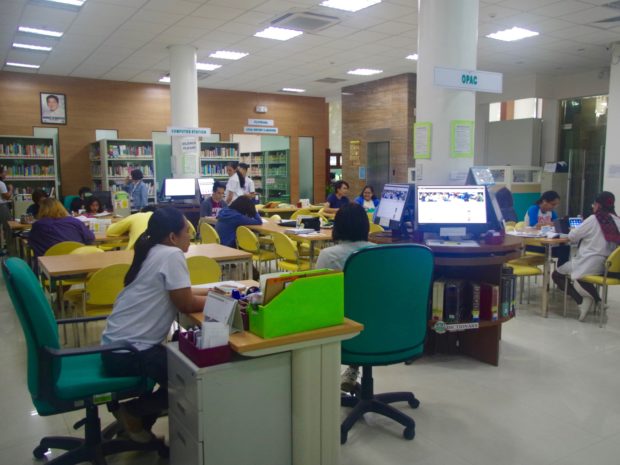
The general reference section’s reading area of the Quezon City Public Library. Image: INQUIRER.net/Cody Cepeda
(What we have observed is no one comes in anymore beyond 5 p.m. although there are those who say that we may just be lacking in marketing. But just the same, we promoted it through our Facebook page and it is still the same. It is like those who are still here at 5 p.m. tend to be the only ones who stay until 7 p.m.)
Cissette Ricardo, officer in charge of the Parañaque City Public Library, also dreams of opening their library for 24 hours, but is more concerned about the safety of the area.
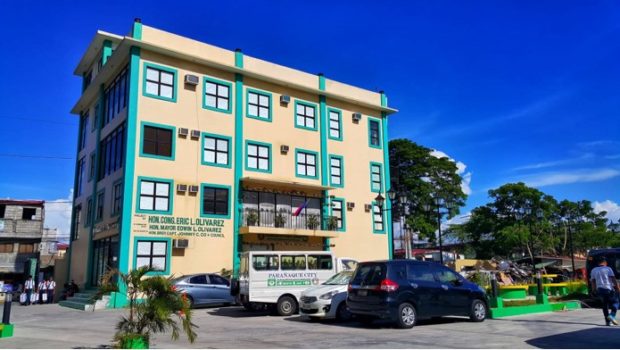
The Parañaque City Public Library. Image: Public Relations/Marketing, Parañaque City Public Library
“It’s my dream also (to be) open 24 hours, (but based on my) assessment (of the) area, (it cannot be done yet). And then it’s not accessible for students,” Ricardo explained. “Dito kasi kailangan pang pumasok and then there are lots of tambays around. Actually, isa ako ‘yung kinakabahan ngayon is ‘yung safety… Tinitingnan ko dito yung security. Although may gate kami, di mo pa rin masasabi kasi eh.”
(Here, you still need to enter the area, and then there are lots of loiterers. I am nervous about safety. I look at security. Although we have a gate, one can never be sure.)
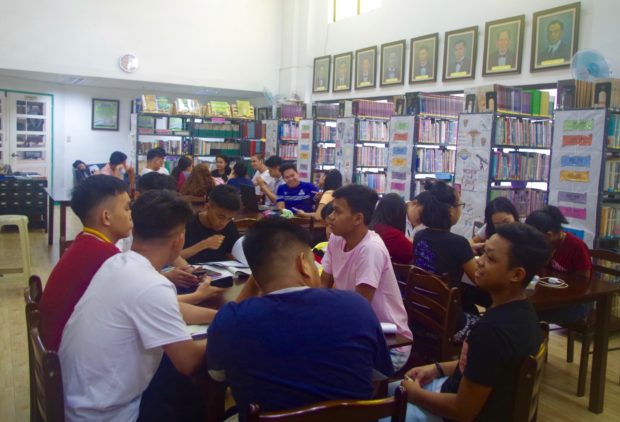
The Filipiniana section of the Parañaque City Public Library. Image: INQUIRER.net/Cody Cepeda
Keeping up with technology
Through the years, lawmakers have filed bills to amend R.A. No. 7743 to introduce the latest technologies in public libraries. What seems to have lacked in crafting the Act was the foresight to anticipate just how much technology would impact and shape the way libraries function and operate today.
Former senator and now Antique congresswoman Loren Legarda filed S.B. No. 1387 during the first regular session of the 14th Congress in 2007 due to the need to equip public libraries with the latest computer technological tools for providing electronic library services.
Senator Sonny Angara also filed S.B. No. 1342 during the first regular session of the 17th Congress in 2017, highlighting the necessity to upgrade the country’s learning system, such that every library and or reading center would employ the latest computer and electronic library technology.
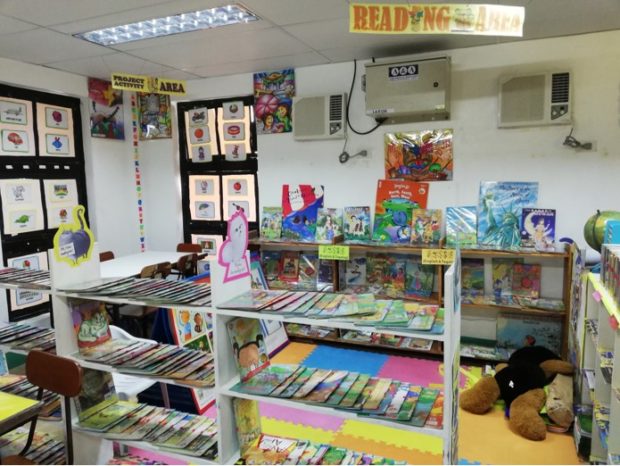
A children’s reading area at the Parañaque City Public Library. Image: Public Relations/Marketing, Parañaque City Public Library
“Yung R.A. 7743, wala siyang sanction, although nakalagay ‘dun saan kukunin ‘yung budget ng LGU… Isa pang strategy is gumawa ng bagong law na mag-f-fit sa tamang panahon. R.A. 7743 walang technology dun, hindi na siya nag-f-fit talaga,” said Velasco. “So, timely na nasa Philippine Development Plan siya, agenda, yung modernization of the National Library and its public libraries. Ongoing ‘yung pag-c-craft ng bill, pag-l-lobby…”
(R.A. 7743 imposes no sactions, although it states where the budget of the LGU would come from. Another strategy is to create a new law which would fit the times. R.A. 7743 does not encompass technology. It no longer fits, really. So it is timely to include the modernization of the National Library and its public libraries in the agenda of the Philippine Development Plan. The crafting of the bill and the lobbying goes on.)
QCPL and PCPL are just two of the public libraries currently adapting technologies to make their services more convenient for users. In QCPL, for one, they scan their collection of rare books to digitize them for public use.
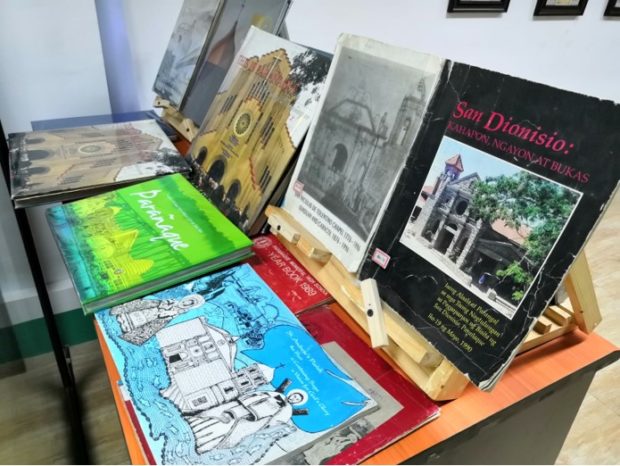
Learning materials at the mini museum of the Parañaque City Public Library. Image: Public Relations/Marketing, Parañaque City Public Library
They also recently installed an RFID security gate in the QCPL to detect books that are not properly checked out, as per Chico. For faster internet service, they are also in the process of switching to fiber optic internet from the free Pipol Konek Wi-Fi which the Department of Information and Communications Technology (DICT) provided them.
“Unti-unti… We are trying or studying the possibility of online registration, yung hindi na sila magsusulat-sulat, pero pinagaaralan pa rin namin with our IT kung paano yun…” Chico added. “Para hindi na sila will go through manual registrations… so hopefully ma-ano namin yun, matapos.”
(Little by little. We are trying or studying the possibility of online registration, so people need not write anymore. But we are still studying with our IT about how to roll that out, so people no longer need to go through manual registrations. Hopefully, we finish that.)
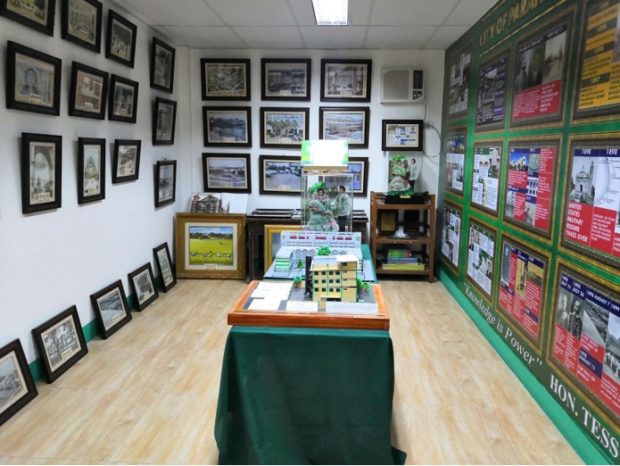
A mini museum inside the Parañaque City Public Library. Image: Public Relations/Marketing, Parañaque City Public Library
The PCPL is also slowly embracing technology, and so far has integrated the use of barcoding of library cards. In the future, people will be able to use the library cards for borrowing books, but for now, Ricardo said they do not allow the loaning of books.
“They cannot check out because one of the problems before, nag-allow ako ng check out, hindi na binabalik ang books,” said Ricardo. “Ang katwiran nila is public, so andun ‘yung thinking nila na ‘pag public, sa kanila ‘yun.”
(I allowed book check outs before but the books were no longer returned. Their reasoning is, it is “public,” so their thinking is since it is public, it is theirs.)
His travels abroad, and visits to the national libraries of Singapore and Thailand also made him realize that when it comes to technology, their library is still quite behind.
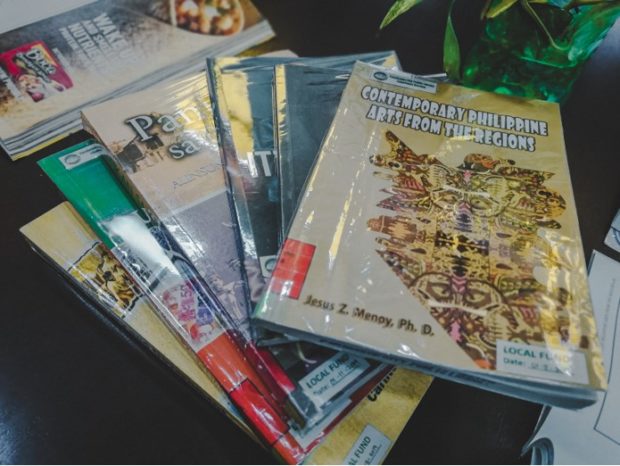
Some books at the Parañaque City Public Library. Image: Public Relations/Marketing, Parañaque City Public Library
“I need to adapt different library systems kasi ‘yun ‘yung wala pa kami, maybe because one is the budget,” he said. “Yung technology-wise wala pa talaga, hindi pa talaga… sad to say, but I’m working [on it] kasi hindi pwedeng wala.”
(I need to adapt different library system because that is what we lack, maybe because the budget is a factor. Technology-wise, there really is nothing, sad to say. But I am working on it because we cannot be content with nothing.)
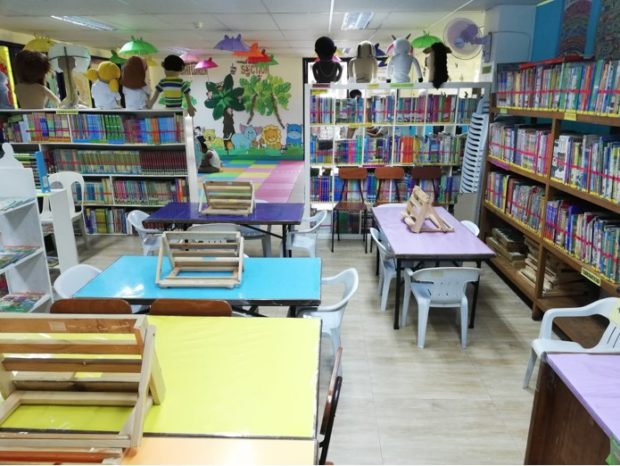
The Children’s Corner at the Parañaque City Public LIbrary. Image: Public Relations/Marketing, Parañaque City Public Library
Libraries as community-safe spaces and ‘makerspaces’
To think of libraries as just a place for studying, and librarians as mere cataloguers, would be too parochial. Declarations about the death of the book, or the library, may just as well be shelved or reduced to plain exaggeration as well, as public libraries and librarians continue to evolve and reinvent their roles in society.
The QCPL and its branch libraries are engaged in different initiatives in the hopes of reaching more people in all its six districts. In the Children’s Corner of the main library, for example, they hold puppet shows, storytellings and film showings regularly. They also dock Bookmobiles in different public schools for a week to encourage students to “read-in-tandem.”
“Minsan nga ‘yung mga staff na namin, lalo na sa aming mga branch libraries, sila ang direct sa community. We have this program instead of akyat bahay, we have Aklat Bahay wherein our staff, sila talaga ‘yung pumupunta sa mga bahay-bahay para mag-conduct ng storytelling,” said Chico. “We have also this, instead of storytelling, we have ‘estero-telling.’ Nagpupunta sila sa mga eskinita, near the estero, ‘dun sila nag-s-storytelling.”
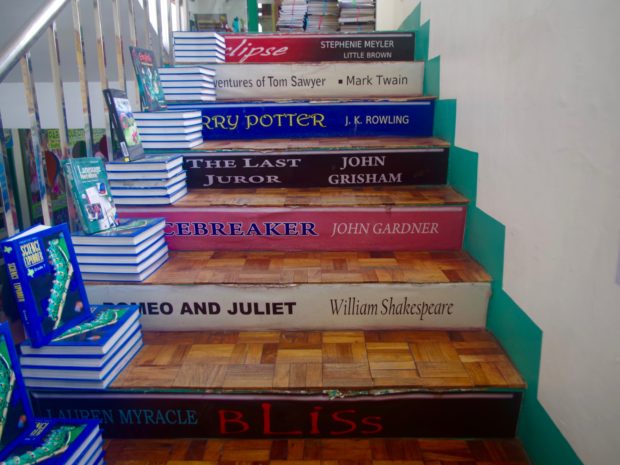
Stairs inside the Parañaque City Public Library are creatively decorated to look like books. Image: INQUIRER.net/Cody Cepeda
(At times, our staff themselves, especially in our branch libraries, are the ones who go directly to the communities. We have this program which takes after “akyat bahay,” we have Aklat Bahay wherein our staff are really the ones who go from house-to-house to do storytelling. Instead of just storytelling, we have “estero-telling.” We go to alleys near estuaries, our staff do the storytelling there.)
The QCPL takes pride in its creative community programs, and rightly so, as they went on to bag the National Library’s “Most Outstanding Public Library with Special Programs and Outreach Services on Malasakit” award last year.
The PCPL, on the other hand, offers daily tutoring to the children from nearby schools. On a daily basis, the library sees around 400 to 500 clients across different age groups, but as per Ricardo, what they really prioritize is the Children’s Section of the library.
“Kasi gusto ko i-empower and i-promote yung reading sa children. Kasi ‘yung mga bata, hindi marunong magbasa at hindi marunong magsulat, especially public schools, and nakakalungkot,” said Ricardo. “So sabi ko sa mga librarians ko, kahit hindi sila mga licensed, ang sabi ko really promote reading and writing skills ng mga bata, kasi marami na kaming naturuan na nagto-top sa school.”
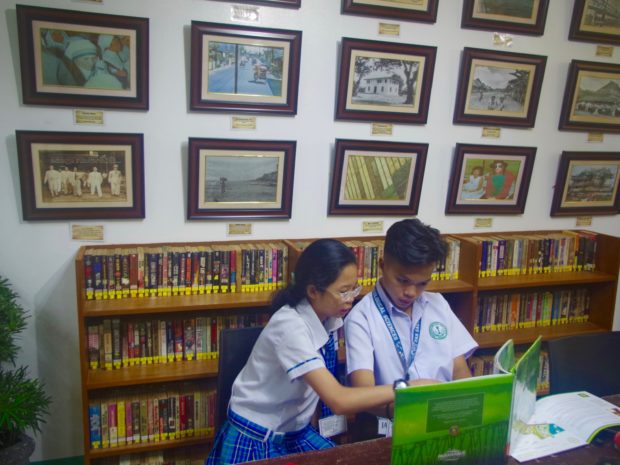
Students can study peacefully inside the Parañaque City Public Library. Image: INQUIRER.net/Cody Cepeda
(I want to promote reading to children to empower them. Some of the children do not know how to read or write, especially those from public schools, and it is sad. So told my librarians that though they may not be licensed, we still need to [develop] the reading and writing skills of the children. We have thought so many who went on to be topnotchers in their schools.)
PCPL also offers literacy programs for senior citizens and children, as well as the Alternative Learning System (ALS) program, to give a chance to those who were unable to attend and finish formal basic education. This July, Ricardo plans to visit the public elementary and high schools of Parañaque’s two districts to orient faculty and students on their library.
“I want to let them know na there is a public library na you can use for free, there is Wi-Fi connection for free, there are a lot of collections, books for you to read… Why not do this kind of project to inform them [that] there is a public library for Parañaque and it’s free for everyone?” he said. “We’ll make it sure na pagpasok sa library, dapat appealing sa kanila, na pag pumasok sila, babalik sila bukas.”
(We will make sure that when they enter the library, it is appealing to them, that when they come in, they will return the next day.)
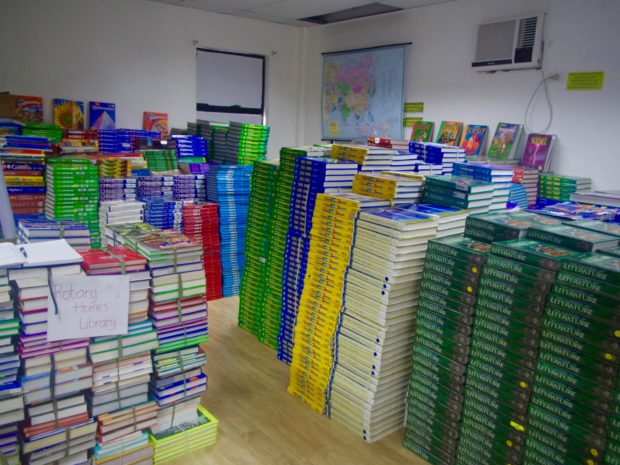
Book donations to the Parañaque City Public Library. Image: INQUIRER.net/Cody Cepeda
The mass digitization of books, along with the ease in acquiring and downloading just about anything on the internet could have been considered a threat once to public libraries the world over. But libraries are not static in themselves, and where others saw threat, they saw the opportunity to innovate or redefine the services they offer, down to the very physical space of the library.
“The library as [a] makerspace, a third place [which is not just a] library, it’s a community… Most of that concept came from an academic, they are starting to change that concept of libraries being a library only, [like only for] research [and] study,” said Chico. “Unti-unti chini-change namin ‘yung concept ng library as library lang. We are converting spaces para magamit talaga ng public aside from the usual.”
(Little by little, we are changing the concept of the library as only a library. We are converting spaces which can be used by the public aside from the usual.)
Ricardo, on his end, allows boardgames in their library because it is not all the time that students work on their assignments.
“Sometimes they want to relax. Bigyan mo sila ng space na kahit mag-ingay sila, mag sigawan sila. At least they have time to relax, kasi the whole day nasa school sila. Syempre pagod sila,” he said. “Sa Thailand, may space sila for discussion… meron sila parang makerspace, ‘Who wants to invent something?’ Sabi ko, ‘Ang sarap gayahin nito, kung meron lang budget ang aming city…’”
(Sometimes students want to relax. Give them space which would allow them to be noisy or even to shout at each other. At least they have time to relax, because they have been in school the whole day. Of course they are tired. In Thailand they have space for discussion, they have something like a “makerspace” [where one can ask], “Who wants to invent something?” That would be so good to emulate, if only our city has the budget.)
Irrelevance, it seems, is not the fear among public libraries. Time yet again would go on to show how libraries and the silent workers behind them transform to offer themselves to the ever-changing needs of the public. Perhaps public libraries only look just as much as they are valued. If this is so, be apprised that there are in fact unceasing library users, who come day in and day out, to prove one thing: that public libraries are here to stay. JB
RELATED STORIES:
Man returns Hawaii library book after 47 years